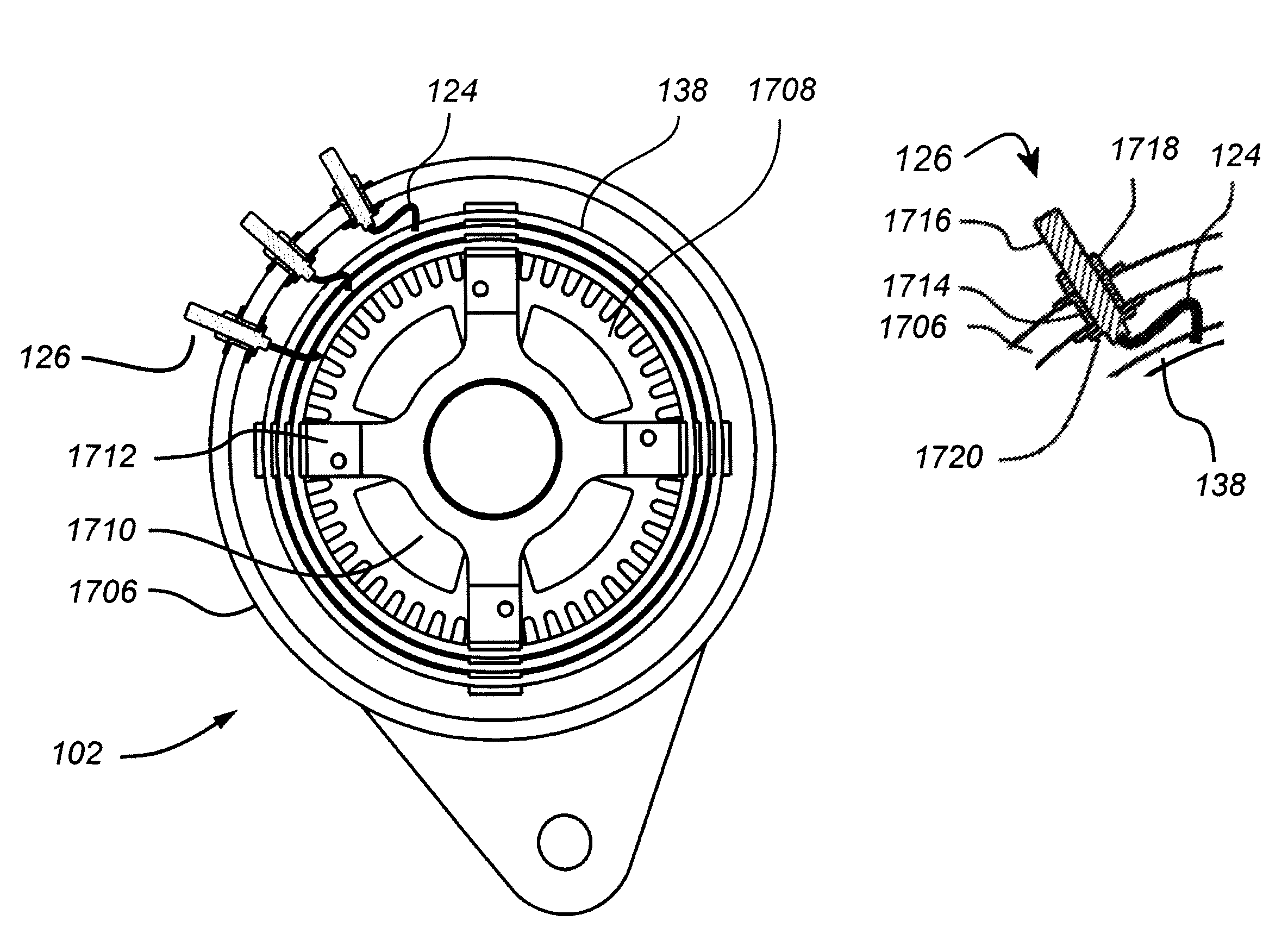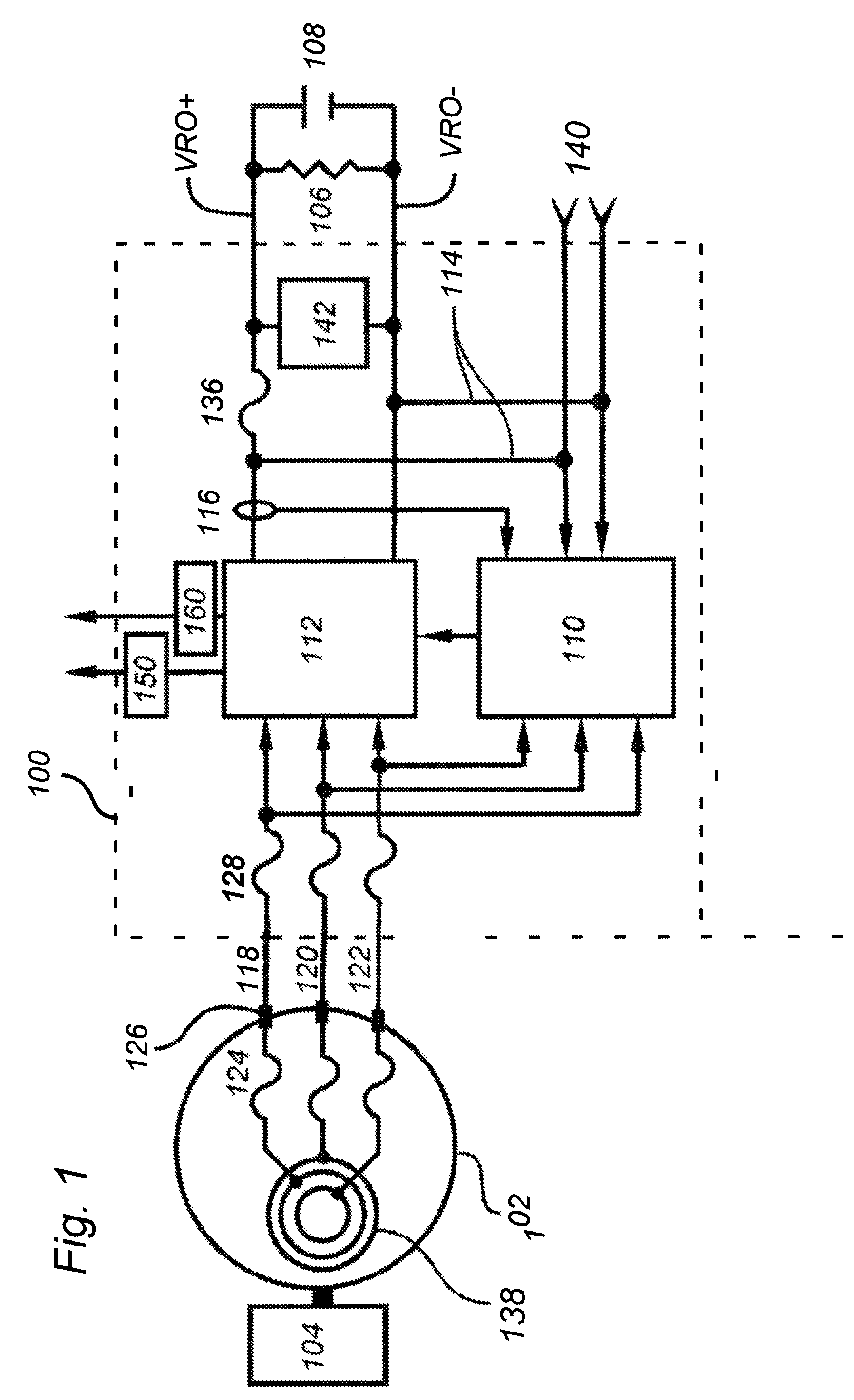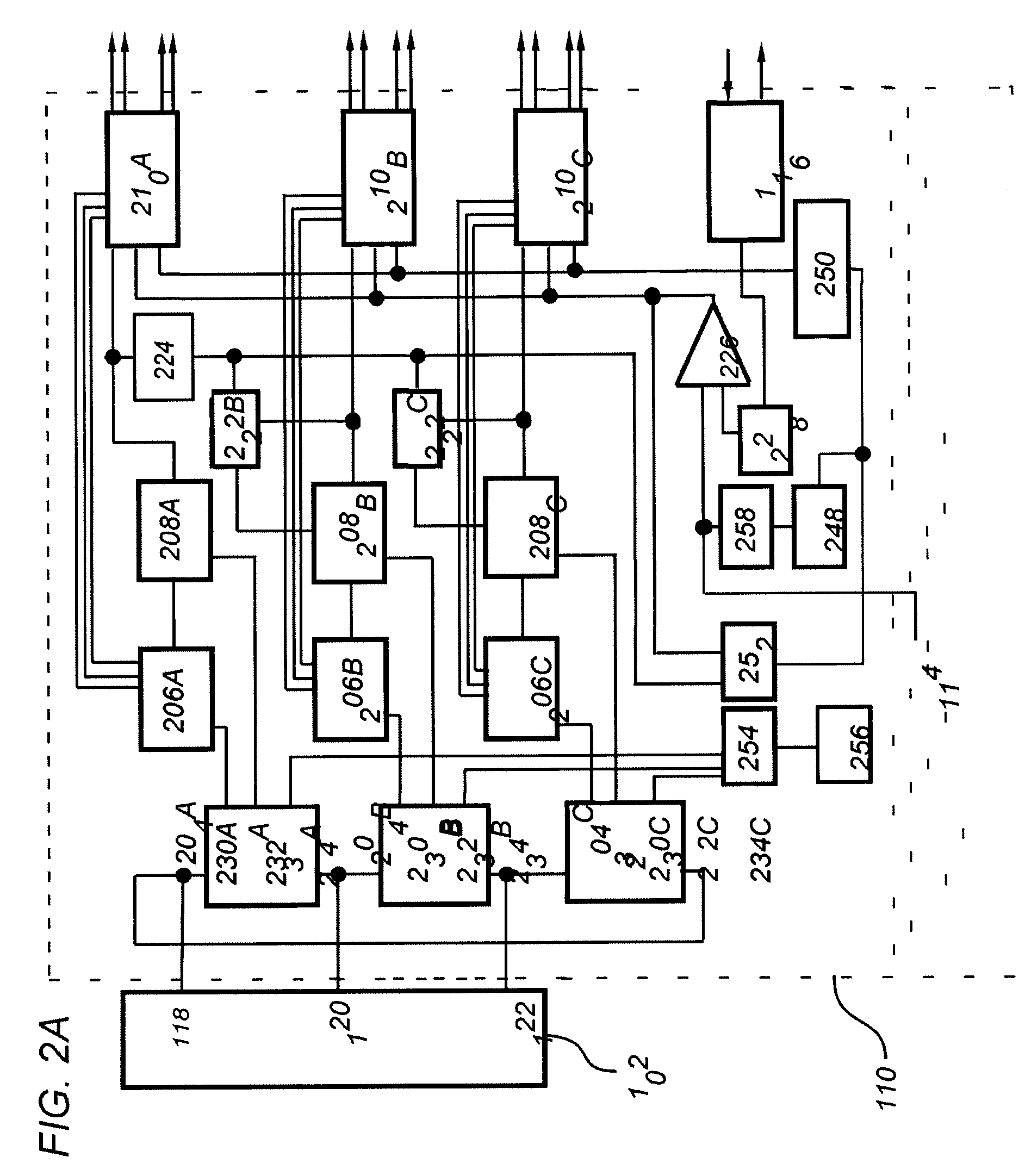Controller for AC generator
a control system and ac generator technology, applied in the direction of electric generator control, windings, cooling/ventilation arrangement, etc., can solve the problems of affecting the operation of the generator, and the rotor of the claw-pole type, etc., to achieve the effect of efficient cooling
- Summary
- Abstract
- Description
- Claims
- Application Information
AI Technical Summary
Benefits of technology
Problems solved by technology
Method used
Image
Examples
Embodiment Construction
[0073]Referring now to FIG. 1, a system 100 for converting between mechanical and electrical energy in accordance with various aspects of the present invention comprises a controller 110 and a switching bridge 112. System 100 suitably cooperates with a source of AC power, such as an alternator 102 and a source of mechanical energy (e.g. drive) 104, e.g. an engine or turbine, a load 106, such as a motor and, if desired, in energy storage device 108, such as a battery, capacitor, or flywheel. If desired, an inverter (sometimes categorized as comprising part of load 106) can also be provided to generate an AC signal at a constant predetermined frequency and amplitude (e.g. 60 Hz, 120V).
[0074]In general, alternator 102 generates AC power in response to mechanical input from energy source 104. Alternator 102 preferably provides multi-phase (e.g. three-phase, six-phase, etc.) AC output signals, e.g. phase A (118), phase B (120), and phase C (122). Those output signals are typically unregu...
PUM
 Login to View More
Login to View More Abstract
Description
Claims
Application Information
 Login to View More
Login to View More - R&D
- Intellectual Property
- Life Sciences
- Materials
- Tech Scout
- Unparalleled Data Quality
- Higher Quality Content
- 60% Fewer Hallucinations
Browse by: Latest US Patents, China's latest patents, Technical Efficacy Thesaurus, Application Domain, Technology Topic, Popular Technical Reports.
© 2025 PatSnap. All rights reserved.Legal|Privacy policy|Modern Slavery Act Transparency Statement|Sitemap|About US| Contact US: help@patsnap.com



